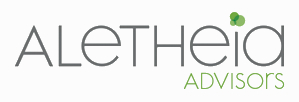Moving beyond meaningful use to envision meaningful tools
A leading electronic medical records company has a patient portal product called MyChart. There has been much discussion in health care regarding ownership of medical information and subsequent focus on allowing patients (people) access to their chart/medical record.
It stands to reason that we minimally allow patients (people) access to their personal medical information however there is a more fundamental question we should be asking:
What portions of a patient’s medical record are useful in moving beyond reactive treatment of symptoms toward addressing root causes and optimizing health?
As we begin the long overdue transformation of health care and health economics in the US, we are slowly realizing that while medical chart data is extremely useful during an acute care episode and portions are useful across acute care episodes; it has very little utility in the fundamental pursuit of long-term health and subsequent containment of cost. Reaching beyond treatment to promote health requires information generated between clinician interactions.
There are a growing number of voices acknowledging this information gap. Recently the American Academy of Nursing released a policy brief: "Putting 'health' in the electronic health record: A call for collective action." This week, Health Leaders media published an article entitled: "CRM Aims to Finish the Job EHRs Started" highlighting the need for more patient-centric care coordination tools and the Office of the National Coordinator for Health IT released an update to the Federal Health IT Strategic Plan focused on patient engagement and robust population health management.
There are longer-term trends as well. While Apple has attracted the most publicity, scores of consumer-focused technology companies have recognized opportunity and focused their attention and considerable resources toward health care. While these are encouraging signs, a recent report from IMS Health is a reminder there is much more to do: "1 In 10 health apps connects to a device, 1 in 50 connects to healthcare providers."
The bottom line
To address today's health care challenges we must move beyond meaningful use of existing EMR/EHRs toward the development of meaningful tools focused on the underlying opportunities to better promote care coordination, adherence, and health-focused behavior change.
This is about health. We're all in it together. Let's continue to drive the conversation and increase momentum for transformation!
